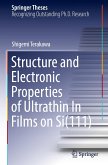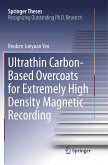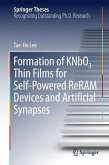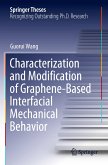This book reports the establishment of a single-atomic layer metal of In and a novel (In, Mg) ultrathin film on Si(111) surfaces. A double-layer phase of In called "rect" has been extensively investigated as a two-dimensional metal. Another crystalline phase called "hex" was also suggested, but it had not been established due to difficulty in preparing the sample. The author succeeded in growing the large and high-quality sample of the hex phase and revealed that it is a single-layer metal. The author also established a new triple-atomic layer (In, Mg) film with a nearly freestanding character by Mg deposition onto the In double layer. This work proposes a novel method to decouple ultrathin metal films from Si dangling bonds.
The present study demonstrates interesting properties of indium itself, which is a p-block metal both with metallicity and covalency. In this book, readers also see principles of various surface analysis techniques and learn how to use them andanalyze the results in the real systems. This book is useful to researchers and students interested in surface science, particularly ultrathin metal films on semiconductor surfaces.
The present study demonstrates interesting properties of indium itself, which is a p-block metal both with metallicity and covalency. In this book, readers also see principles of various surface analysis techniques and learn how to use them andanalyze the results in the real systems. This book is useful to researchers and students interested in surface science, particularly ultrathin metal films on semiconductor surfaces.








